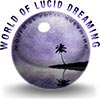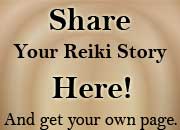
|
> Home 
Custom Search
 > My first Reiki healing experience > Origin of Usui Reiki level system
> Why we can't do Attunements to ourselves.
> Reviews of reiki types and reasons for their existence
> Chakras - Introduction
Find out more about > Disclaimer Follow Me on
Free Reiki Newsletter
|

Reviews of reiki types and reasons for their existenceThis is one of the reviews of reiki types that will present the various reiki styles and their particularities. They are different ways of working with the energy and can also feel slightly different to one another. The many reviews of reiki types explain this as being different sides of the Universal energy, which gives each its own unique vibration. One of the areas of confusion for people that are just starting with Reiki is the large number of styles and schools available today. A lot of confusion has arisen because many different systems have not been properly defined. When a Reiki Master comes up with a new system or makes certain changes, it would be extremely helpful for everyone if it is given a new name and the changes are stated clearly, their origins revealed and their teachers acknowledged. Among other reviews of reiki types, here is a concise list of the main Reiki styles: Usui Shiki RyohoUsui Shiki Ryoho refers to the Reiki system that has come to us via the spiritual lineage: Mikao Usui, Chujiro Hayashi, Hawayo Takata. This method is known as a Japanese Healing Art and is taught in three Levels. Being created to address mostly western students, Japanese terminology is not used to describe these Levels. Actually, apart from the symbol names and a few terms (Reiki, Usui Shiki Ryoho and Usui Reiki Ryoho) there are no Japanese terms at all. Takata ReikiMrs. Takata's Reiki style is probably the most popular system of Reiki in the world today. Being a student of Hayashi, Takata took her adapted system of Reiki to America in the early 1970s and during a 10-year period, she brought 22 western students to the teacher level of her system. Reido ReikiIt means "Spiritual Way Reiki" and it was created and developed by Fuminori Aoki, who learned Reiki from Mieko Mitsui, on the Barbara Weber Ray lineage. Reido Reiki is often considered an original style, because it originated in Japan. It is a mix of traditional Japanese Reiki and Western Reiki and promotes meditation and living a Reiki way of life. Real reiki - the radiance techniqueThe Radiance Technique is the Reiki system taught by Barbara Ray, which is one of the 22 Reiki Masters trained by Mrs. Takata. From 1978 to 1980, Barbara Ray studied Reiki extensively with Hawayo Takata at the Master's home in Iowa. Ray's system is unpolluted, as developed by Usui entirely. Gendai reiki hoIt means "modern /contemporary reiki method" and has been created by Japanese Reiki Teacher Hiroshi Doi. Gendai reiki ho is not a new system, but puts together the best Japanese and Western Reiki practices for easy use in everyday life. Jikiden reikiJikiden is a Reiki method taught by the late Chiyoko Yamaguchi who died in 2003 (which first learned Reiki in 1938 from Chujiro Hayashi) and her son Tadao Yamaguchi. He is conducting the Jikiden Reiki Association Jikiden Reiki seminars, which enable people to learn practical Reiki that has been proven by experience to be very effective. Egyptian reikiWhile traditional Reiki gets the energy from a higher power, Egyptian Reiki attempts to control this free energy and turn it into strong healing energy vibrations. Egyptian healing teaches techniques like rhythmic and healing breathing and sound vibration healing among other things. It has some particularities, but the ultimate goal is very similar with both.
Hawayo Takata famously once said, "A little Reiki is better than no Reiki". Indeed, reviews of reiki types reveal the diversity of styles, which can be a challenge to all the people wanting to learn about complementary healing or become a reiki master. But reading these reviews of reiki types and with a bit of determination, you will surely find the style that suits you best. Other articles about Reiki styles:What is Kabbalah Reiki and its originWei Chi Tibetan Reiki |
|
- Copyright©Essential Reiki | All rights reserved.
Powered by Site Build It! Website design by
Cre8ve Media


